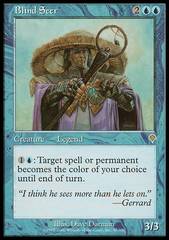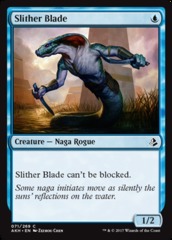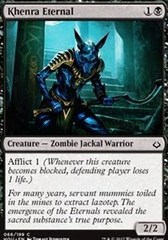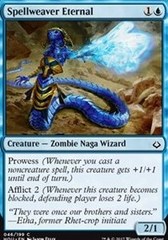When to Force

Draft is by far the best format. It is exceptionally skill testing. Depending on the set, it generally has excellent replay value with usually 10 archetypes to choose from, sometimes more. Drafting cooperatively involves working out what the people to either side of you are drafting. Add the fact that playing with your pod ramps up the complexity even further as it becomes beneficial which way you passed certain cards when you are playing your matches.
One of most important skills in draft is altering card values correctly depending on the cards you have already taken. Accounting for the relative power level of the card you are looking to pick and the power level of the cards you already have. Your mana curve comes into play too. You don’t want too many of a single cost; likewise you don’t want too few 2 mana cards. You (generally) don’t want a lack of creatures etc.
All these factors work towards providing you with the best possible deck for your seat. Working cooperatively with those sitting either side of you allows you all to benefit by prioritising different cards and colours therefore taking what you require for your deck whilst passing the best cards for your neighbour’s deck on to them.
Occasionally, an archetype will come along that will push you strongly towards breaking with that particular heuristic. Forcing an archetype can and often will work out poorly. Drafting your seat correctly, reading signals and acting accordingly will give you more 8/10 decks. Forcing will give you more 10/10 decks but it will also give far more 1/10s when you trainwreck yourself due to your neighbours also being in your archetype and you are unable to force them out due to some insane bomb they took pack 1 pick 1.

Blindly forcing is almost always incorrect. Sitting down to draft with the decision of what you are going to build already made is going to lose you a lot of equity. Another great thing about draft is that it is self-correcting. If an archetype is considered the best by the pod, then it becomes more likely that a higher number of people at the table will try and draft the archetype. As a result of this, multiple people end up sharing the cards that deck wants leaving those drafting the 2nd, 3rd, 4th… best archetypes uncontested and giving them a better quality deck than if everyone had drafted without that knowledge.
There isn’t a metagame in the conventional sense found with Constructed formats but ideas do evolve and decks come in to existence with the progression of the format. One example is the UW Slither Blade deck that saw some success at Pro Tour Amonkhet. This deck wasn’t really a thing before the Pro Tour and it wasn’t really a thing after the Pro Tour. But for that event in particular, it was an archetype that multiple people drafted to a successful record.

Instead, we want to take advantage of a difference in opinion/knowledge on the format so that we can draft the best archetype without fighting over it. In Triple Gatecrash draft, Orzhov was the best archetype and it wasn’t close. It was so much better than the other archetypes that it wasn’t uncommon for 3 or more people at the table to draft it and 2 copies of the deck to make the finals as the card pool was so deep. Triple Avacyn Restored gave us Green Blue Soulbond which wasn’t nearly as deep but was still the best deck not close. Both of these draft formats were particularly poor and almost universally panned by the community.
However, at the moment, we have a very healthy draft format. Hour of Devastation has slowed down the format considerably from triple Amonkhet. The number of Exert creatures has gone down and, whilst Afflict allows chip damage in over the course the game, the board often stabilises before it can win the game. Walls are still terrible though. Ramp has gained Oasis Ritualist allowing you to splash bombs, ramp and block at the same time.

Some testing partners and I concluded that the UR Spells/Prowess deck was by far and away the best archetype. Now that people have decided the format has gotten slower, the emphasis on 2-drops has slipped somewhat. No longer are people cramming obscene amounts of 1 mana spells into their decks. Red is the deepest colour in Hour of Devastation. Conversely, Blue is probably the shallowest. Many of the cards that are good in UR are extremely bad in other decks so you don’t compete with other colours for the cards.
Without a doubt, the most important card in this archetype is Spellweaver Eternal.

This card pretty much makes the deck. It incentivises you to play cards like Crash Through and makes your Traveler’s Amulets better. Both of the aforementioned cards allow you to skimp on lands. The ideal build of the deck ends at 4 cmc but extending to 5 isn’t a major problem if you can pick up some copies of Desert Ceredon and the deserts to go with it. Worse but similarly passable options include Manticore Eternal and Ominous Sphinx with the former improving with the number of combat tricks you have. Triggering the Sphinx can sometimes be used offensively to reduce the power of blocking creatures. Blur of Blades is at its best in this archetype too. The chip damage really counts for a lot and the -1/-1 counter in tandem with prowess creatures can lead to some unexpected results in combat for your opponent. One minute your opponent is putting their 2/3 in front of your Spellweaver Eternal thinking that if you can get 1 trigger out of it at least they will trade and the next, they are taking 4 and you’re keeping your creature. Brute Strength tends to have a similar effect
Aerial Guide is going to be fought over by multiple archetypes but if you can pick some up they put in work. Given green creatures are often the largest and (usually) never have flying, one would think Aerial Guide would be best served in that deck but a 2/2 flyer for 3 isn’t really where you want to be in that deck. The cube style approach of drafting payoffs, ramp and card draw is the best approach for drafting that particular archetype. In UR, giving your 2 drops flying is excellent. Equally, giving cards like Frontline Devastator flying will often close out the game. Making Eternal of Harsh Truths harder to block is also going to work in your favour keeping your velocity up.
Both halves of Open Fire are available to you more often thanks to chip damage from Afflict, Blur of Blades, Firebrand Archer, Brute Strength, Fervent Paincaster, Ramunap Ruins etc.
Riddleform is also incredibly powerful. In many games with a correctly built deck, it will simply be a 3/3 flyer for 2. You’ll rarely activate the scry ability and if you are something has likely gone awry. Having some wrath effect protection will occasionally come in useful too. Sand Strangler, with the deserts, puts in even more work here than in other archetypes. You get to take advantage of Unsummon, Consign // Oblivion and Winds of Rebuke to get the enter-the-battlefield ability again. In certain situations, you can make bad attacks with all your creatures into a 4/4 to have your opponent block the Strangler taking the rest only to have you bounce it then begrudgingly having to play out creatures that die to it.
In the right build of deck, Tragic Lesson turns into 2 mana draw 2 cards. Certain cards however stay bad or aren’t meant for this deck:
- Aven Reedstalker – this card is bad in all archetypes
- Countervailing Winds – too often simply cycles and is rarely good until the late game; it does however improve with copies of Enigma Drake and Warfire Javelineer
- Cunning Survivor – again, you don’t want to play too many cyclers although this can synergise with certain cards that you can sometimes play like Flameblade Adept, Burning-Fist Minotaur, Tormenting Voice etc but a 1/3 for 2 is the wrong statline for this deck
- Inferno Jet/Imaginary Threats – Inferno Jet is the better of the two by some margin but both aren’t really were you want to be and 6 mana is a lot
- Vizier of the Anointed – the majority of Eternalize and Embalm effects are costed too high for this card to be worth an inclusion
Equipped with this new knowledge, go forth and 3-0 your leagues.
I’ll be messing about trying to kill my opponent with Leave // Chance for funsies.
P.S. If you open The Scorpion God, probably still best to play Red Black.





